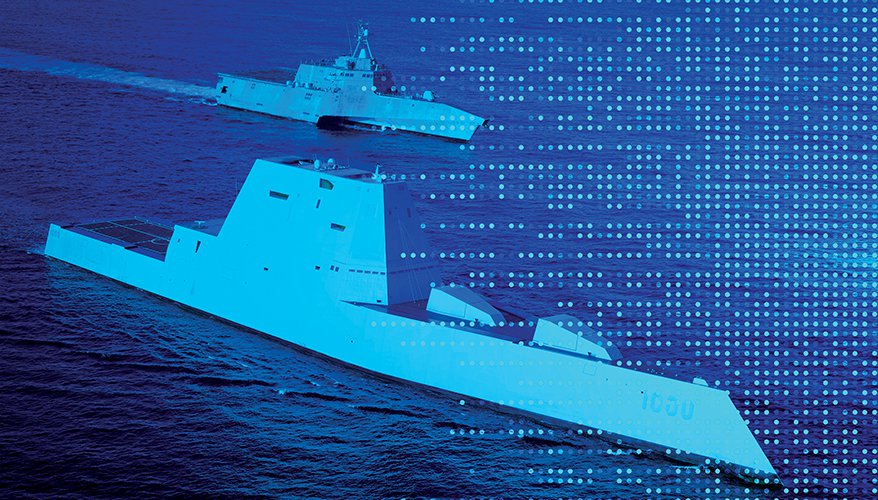Laura Heckmann

Most software aboard Navy ships is older than the sailors and less sophisticated than home gaming systems. Bridging the digital gap presents the biggest opportunity for the defense industry since the Cold War, a Navy official said.
Lt. Artem Sherbinin, chief technology officer for Task Force Hopper — established in 2021 to enable artificial intelligence and machine learning integration across the surface force — said the Navy is in the midst of what he called digital innovation and to fully realize it, the service needs to embrace software and networking approaches that are currently “changing the world.”
How software is being used today represents a “fundamental shift in how we think about traditional industry,” he said during a recent panel discussion at the Surface Navy Association’s 36th National Symposium. “Defense never caught on to this trend.”
Windows XP — an application released in 2001 and discontinued in 2014 — is still used aboard Navy ships, he said. The Navy re-upped its contract in 2015, and sailors are still dealing with it.
“Today’s sailor demands a completely new experience than what we’re giving them: a digital experience,” Sherbinin said.
The average service member is under the age of 25, yet the average shipboard software application used by sailors to perform day-to-day maintenance and administrative tasks is 23 years old, he said.
“That means the average sailor is younger than the average piece of software that they’re using,” he said.
Furthering his point, Sherbinin noted that a Tesla Model S car has 10 times the computing power of an F-35 Joint Strike Fighter.
“The F-35 program is the largest test program in the history of the United States, which makes it the largest defense program in the history of the world,” he said. “Daily commodities that we’re used to having in our homes are more powerful than the most advanced defense systems in the world.”
The United States has the capabilities, Sherbinin said. The gap that needs to be bridged is between digital capabilities — which he called America’s best comparative advantage with other countries — and the existing state of defense in the digital space.
That begins with thinking differently about the fight, he continued. When thinking about kill chains, surface warfare officers tend to think of hardware, like missiles and ships. “Yet, today’s kill chain is arguably more influenced by … finding, fixing and tracking something. And that’s a digital process,” he said.
“The process is the product when it comes to software,” he said. “When you’re deploying a piece of software or any kind of digital capability, you are changing fundamentally how that sailor is going to think, act and compete in their workplace.”
Modernizing Navy ships is ultimately about improving the sailor’s user experience, and sailors will continue to be digital natives, he said. All efforts from both government and industry need to start there.
Addressing these challenges is what Sherbinin called “the biggest opportunity for the defense industry since the Cold War.”
“So industry, if you’re wondering what your opportunity space looks like, it’s this: fiscal year [2024], the Navy is looking at spending $11.3 billion on — and this is straight out of the NDAA — unclassified IT.”
“Just $300 million” of that is going to sustain legacy systems, leaving industry nearly $11 billion of operating space. “If you’re wondering if we are spending the money or offering the money to spend on it, it’s there,” he said.
While obstacles exist between industry and working with the Defense Department, the most valuable commodity the Navy can offer industry is access to its sailors, Sherbinin said.
“If you have an application that you’ve built, and you want a sailor to try it out — we can’t pay for it, can’t acquire it for you, but we can sure as hell have a sailor try it out,” he said.
Fortified by his numerous examples of antiquated day-to-day operations on board ships, Sherbinin implored industry to join the Navy in beginning with the user experience.
“You’re waiting for us to tell you what we need,” he said. “Here’s what we need: it’s less white papers, it’s more existing capabilities that are ready to go on a ship.” ND
No comments:
Post a Comment